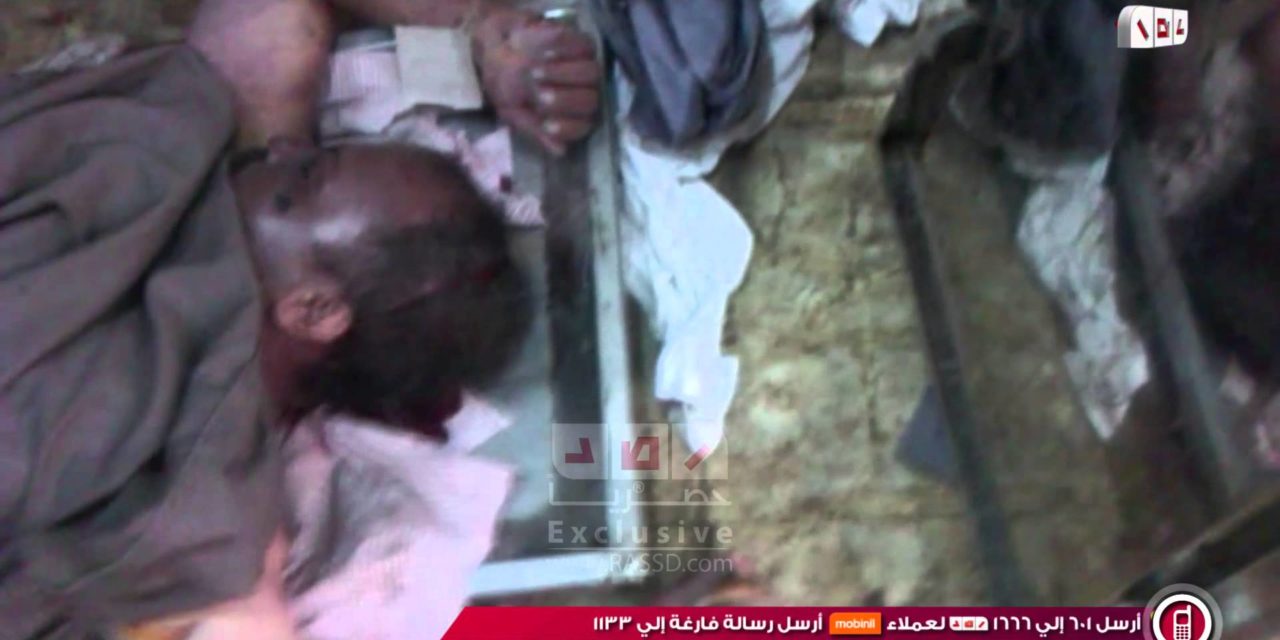Patrick Kingsley of The Guardian examines an incident in Egypt last August amid the killing of several hundred protesters against the military coup that ousted President Morsi — the death of 37 prisoners trapped in the back of a police van:
Some time after midday on Sunday, 18 August 2013, a young Egyptian film-maker called Mohamed el-Deeb made his last will and testament. It was an informal process. Deeb had no paper on which to sign his name and there was no lawyer present. He simply turned to the man handcuffed next to him and outlined which debts to settle if he should die, and what to say to his mother about the circumstances of his death.
Deeb had good reason to fear for his life. He was among 45 prisoners squashed into the back of a tiny, sweltering police truck parked in the forecourt of Abu Zaabal prison, just north-east of Cairo. They had been in the truck for more than six hours. The temperature outside was over 31C, and inside would have been far hotter. There was no space to stand and the prisoners had had almost nothing to drink. Some had wrung out their sweat-drenched shirts and drunk the drops of moisture. Many were now unconscious.
Most of the men inside that van were supporters of Mohamed Morsi, Egypt’s first elected president. Squashed against Deeb was Mohamed Abdelmahboud, a 43-year-old seed merchant and a member of Morsi’s Muslim Brotherhood.
Following four days of mass protests against his year-long rule, the army had overthrown Morsi and the Brotherhood in early July. In response, tens of thousands of people camped outside the Rabaa al-Adawiya mosque in east Cairo to call for the president’s reinstatement. Within a week, the space outside Rabaa turned from an empty crossroads to a sprawling tent city that housed both a market and a makeshift field hospital. At Rabaa’s centre was a stage where preachers led prayers and firebrands spouted sectarian rhetoric. At its edges were a Dad’s Army of badly equipped guards, dressed in crash helmets and tae kwon do vests, standing before a series of walls built of stones ripped from pavements. From behind these barricades, two or three times a day, protest marches would snake into nearby neighbourhoods, blocking major thoroughfares and paralysing much of the city. Clashes between armed police and protesters claimed more than 170 lives.
For Islamists, Rabaa was one of the last remaining symbols of freedom. But for the millions who opposed Morsi, it was a hideout for violent extremists who were holding the country to ransom. Confrontation became inevitable. On Wednesday 14 August, some time after 6am, police and soldiers surrounded the camp, which still contained thousands of women and children. In the 12-hour operation that followed, more than 900 protesters were shot dead, many by sniper fire. A group of armed protesters fought back, killing nine policemen, according to Human Rights Watch. But they were vastly outnumbered. As police locked down the streets around the camp, they arrested thousands – not just Morsi supporters, but also dozens of residents and workers caught in the wrong place at the wrong time.
On Sunday 18 August, Professor Gamal Siam, an economist at Cairo University, arrived at the office of Egypt’s chief prosecutor, Hisham Barakat. His oldest son, Sherif, had been arrested the previous Wednesday, during the crackdown at Rabaa. But there had been a mistake, his father told the chief prosecutor, and he needed help.
Sherif Siam was not a member of Morsi’s Muslim Brotherhood, nor even a Morsi supporter. Sherif had said on Facebook that the president’s overthrow had been not a coup, but a revolution. Certainly, he had visited the camp at Rabaa al-Adawiya two or three times, but he’d been to anti-Morsi marches, too. When the news broke of the Rabaa camp’s dispersal, his father said Sherif went down to help the wounded.
On some level, Barakat sympathised. He gave Sherif’s father a signed letter to present to prison officials, to help speed up the processing of Sherif’s case. But what neither Barakat nor Siam knew was that it was already too late.
A few minutes earlier, in the back of an overcrowded police van on the other side of Cairo, Sherif Siam –– and 36 others, including Deeb –– had been gassed to death.
The next day, footage emerged of the 37 corpses on their arrival at Cairo’s main morgue. Most of the bodies were bloated, their faces red or black. Deeb’s face was one of the few that was unmarked. But Sherif Siam’s was swollen and blackened, almost beyond recognition.
What had happened was soon blamed on the prisoners. Police officials said the 37 died shortly before they were due to be handed over to the warders at Abu Zaabal prison, just north-east of Cairo. According to their narrative, the prisoners kidnapped a policeman who opened the door to let them out, prompting his colleagues to fire tear gas inside the truck to subdue them. State media outlets went further, claiming that Muslim Brotherhood gunmen had attacked the van to try to free those inside, and the prisoners died in the ensuing clashes.

